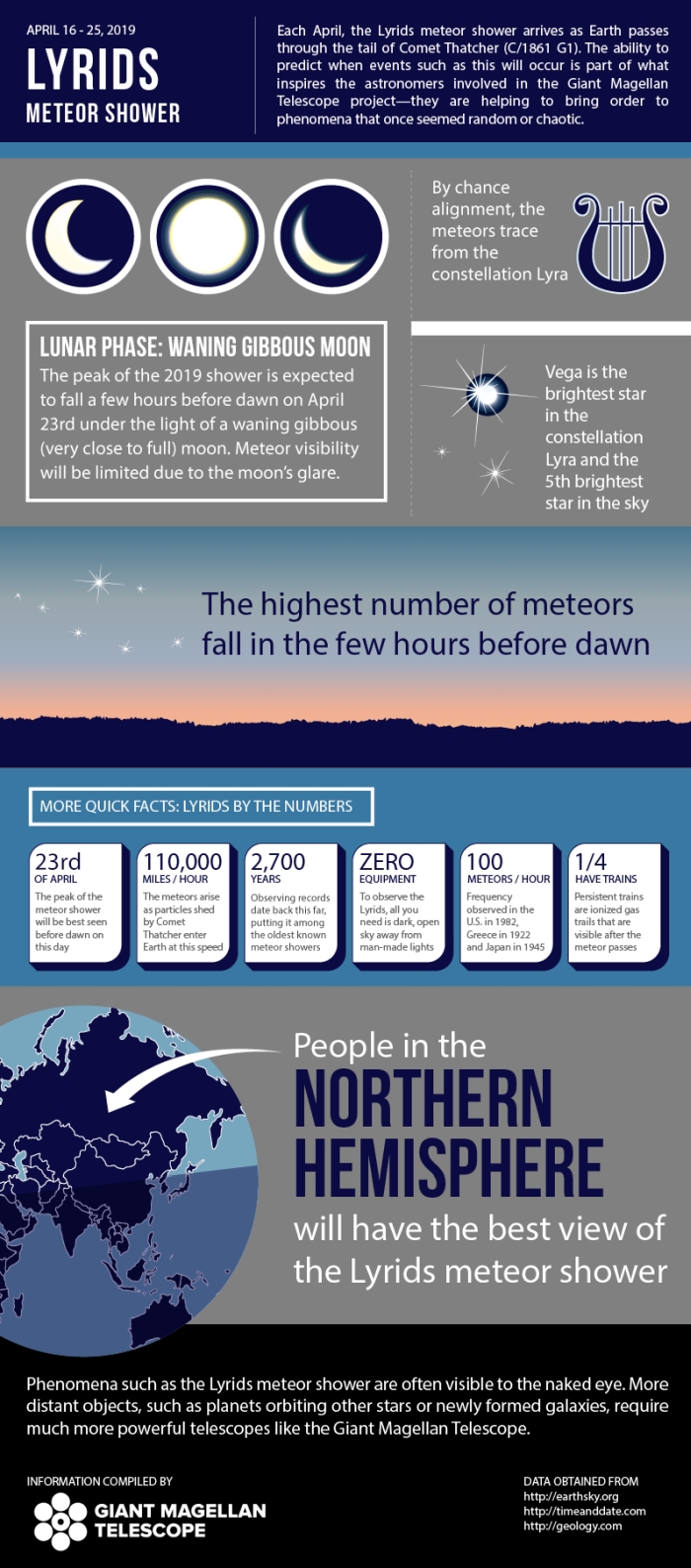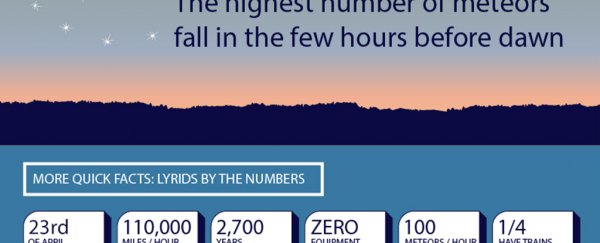As Earth makes its annual passage through the tail of comet C/1861 G1, or Thatcher, we're treated to the spectacular sight of meteors burning up in the atmosphere. This is the Lyrid meteor shower, and it comes around every April.
This year, the lovely team at the Giant Magellan Telescope has put together a beautiful infographic (below) packed with everything you need to know.
The shower is due to peak just before dawn on April 23, and those in the Northern Hemisphere, as usual for the Lyrids, will get the best view, looking towards the constellation Lyra.
In the Southern Hemisphere, Lyra is going to be a bit closer to the horizon.
The Lyrids aren't the most prolific annual meteor shower (that's the Perseids every August). There has been the occasional rare shower with up to 100 meteors an hour, but usually you can expect to see around 10-20 meteors an hour during their peak.
 (GMTO)
(GMTO)
Sadly, a waning gibbous Moon will also be in the sky in the pre-dawn hours this year, which will make the meteor streaks a little bit harder to see and photograph, but that shouldn't stop you from getting out and enjoying a spot of stagazing.
If you're lucky, you might spot Jupiter, hanging about right next to the Moon - an excellent opportunity for an astrophotography photobomb.
